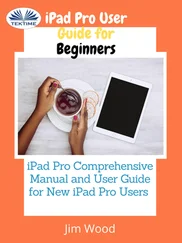British government intervention was stepped up in 1721, when Robert Walpole, Britain’s first prime minister, [36] Walpole’s official job title was actually the chief minister, but we may be excused calling him the first prime minister. He was the first head of British government who controlled all ministries – before him, there had been two or even three joint heads of government. Walpole was also the first one who took up residence (in 1735) at 10 Downing Street, the famous official residence of the British prime minister.
launched an ambitious and wide-ranging industrial development programme. It provided tariff protection and subsidies (especially to encourage export) to ‘strategic’ industries. Partly thanks to Walpole’s programme, Britain started to forge ahead in the second half of the eighteenth century. By the 1770s, Britain was so obviously ahead of other countries that Adam Smith saw no need for protectionism and other forms of government intervention to help British producers. However, it was only nearly a century after Smith’s TWON – in 1860 – that Britain fully switched to free trade, when its industrial supremacy was unquestioned. At the time, Britain accounted for 20 per cent of world manufacturing output (as of 1860) and 46 per cent of world trade in manufactured goods (as of 1870), despite having only 2.5 per cent of the world population; these numbers can be put into perspective by noting that the corresponding figures for China today are 15 per cent and 14 per cent, despite its having 19 per cent of the world population.
The US as the champion of protectionism
The US case is yet more interesting. Under British colonial rule, its development of manufacturing was deliberately suppressed. It is reported that, upon hearing about the first attempts by the American colonists to engage in manufacturing, William Pitt the Elder, the British prime minister (1766–8), said that they should ‘not be permitted to manufacture so much as a horseshoe nail’.
After gaining independence, many Americans argued that their country should industrialize if it was to rub shoulders with the likes of Britain and France. Leading this camp was no less than the first ever minister in charge of the US economy, Alexander Hamilton, the treasury secretary (that’s the one you see on the $\10 bill). In his 1791 report to the Congress, Report on the Subject of Manufactures , Hamilton argued that the government of an economically backward nation, such as the US, needs to protect and nurture ‘industries in their infancy’ against superior foreign competitors until they grow up; this is known as the infant industry argument. Hamilton proposed the use of tariffs and other measures to help the infant industries; subsidies, public investments in infrastructure (especially canals), a patent law to encourage new inventions and measures to develop the banking system.
In the beginning, the slave-owning landlords from the South, who then dominated US politics, thwarted Hamilton’s plan; they didn’t see why they should buy inferior ‘Yankee’-manufactured products when they could import better and cheaper things from Europe. But, following the Anglo-American War (1812–16) – the first and so far the only time that the US mainland was invaded – many Americans came around to Hamilton’s view that a strong country needed a strong manufacturing sector, which was not going to happen without tariffs and other government interventions. The only pity was that Hamilton was not around to see his vision realized. He had been shot dead in a pistol duel in 1804 by a certain Aaron Burr – the serving vice president of the country at the time (yes, those were wild days – a serving vice president shoots a former finance minister dead, and no one goes to prison).
After the shift of direction in 1816, the US trade policy became increasingly protectionist. By the 1830s, the country was boasting the highest average industrial tariff in the world – a status that it would keep for (almost all of) the next hundred years, until the Second World War. During that century, tariffs were much lower in states such as Germany, France and Japan – states that people these days normally associate with protectionism.
In the first half of this protectionist century, together with slavery and federalism, protectionism remained a constant bone of contention between the industrial North and the agrarian South. The issue was finally settled by the Civil War (1861–5), which the North won. The victory was no accident. The North won exactly because it had developed manufacturing industry in the previous half a century behind the wall of protectionism. In Margaret Mitchell’s classic novel Gone with the Wind , Rhett Butler, the leading male character, tells his Southern compatriots that the Yankees would win the war because they had ‘the factories, the foundries, the shipyards, the iron and coal mines – all the things we [the Southerners] haven’t got’.
Free trade spreads – mostly through unfree means
Free trade was not responsible for the rise of capitalism, but it did spread throughout the nineteenth century. Some of it happened in the heartland of capitalism in the 1860s – Britain’s adoption of free trade and the signing of a series of bilateral free-trade agreements(or FTAs), in which two countries abolish import restrictions and tariffs on each other’s exports, among the Western European countries. But much of the spread happened on the periphery of capitalism, in Latin America and Asia.
This was the result of something that you would not normally associate with the word ‘free’ – that is, force, or at least the threat of using it. Colonization was the obvious route to ‘unfree free trade’, but even many countries that were not colonized were also forced to adopt free trade. Through ‘gunboat diplomacy’, they were forced to sign unequal treatiesthat deprived them of, among other things, tariff autonomy(the right to set their own tariffs). [37] Through the provision known as ‘extra-territoriality’, these treaties also deprived the weaker countries of the ability to try foreign citizens for crimes committed in their territories. Some other unequal treaties demanded that the weaker countries cede or ‘lease’ parts of their territories; China ceded to Britain Hong Kong Island in 1842 and Kowloon in 1860, while Britain ‘leased’ the so-called New Territories of Hong Kong for ninety-nine years in 1898. Unequal treaties often forced the weaker country to sell foreigners the rights to exploit natural resources (e.g., minerals, forestry) for minimal fees.
They were allowed to use only a low uniform tariff rate (3–5 per cent) – enough to raise some government revenue but not enough for infant industry protection.
The most infamous unequal treaty is the Nanking Treaty, which China was forced to sign in 1842, following its defeat in the Opium War. But the unequal treaties had started with the Latin American countries, upon their independence in the 1810s and the 1820s. Between the 1820s and the 1850s, a string of other countries were forced to sign them – the Ottoman Empire (Turkey’s predecessor), Persia (Iran today) and Siam (today’s Thailand), and even Japan. The Latin American unequal treaties expired in the 1870s and the 1880s, but the Asian ones lasted well into the twentieth century.
The inability to protect and promote their infant industries, whether due to direct colonial rule or to unequal treaties, was a huge contributing factor to the economic retrogression in Asia and Latin America during this period, when they saw negative per capita income growths (at the rates of - 0.1 and - 0.04 per cent per year, respectively).
Читать дальше












